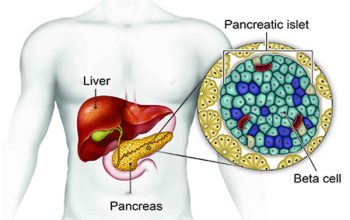Exercise is the best way to unwind yourself. Activities release endorphins, which trigger a positive feeling in the body. This positive feeling can have a significant impact on a diabetic patient. High blood pressure is a condition where a person has to watch his/her activities to control it consistently. Exercise helps blood sugar levels to become stable and increases insulin in the body, which further helps to extract sugar from the blood, which in turn maintains the correct level of sugar levels.
Performing exercise is right. However, a person with diabetes must watch out on the blood pressure reactions depending on the type to practice chosen. The practice can be related to the mind or the physical body varying from Yoga to playing long-duration tennis. It is vital to make a regular schedule on anything as a form of Exercise is adopted in daily life.

Any physical activity can become an essential approach to ease stress. By doing these activities in a routine can have direct stress-busting benefits.
How Exercise and blood pressure are connected
Physical activities have shown an increase in heart health. Healthier the heart, lower are the chances of heart diseases, as the healthy heart pumps more blood, which is good for blood circulation and decrease stress on the heart. Blood pressure means concerning more about breathing, and breathing connects to the heart. Exercise can help you develop excellent breathing habits, control over the short and long breath, which ultimately can reduce heart stroke risk. Secondly, Exercise can help in maintaining weight and a flexible body. Overweight, diabetic patients tend to have obesity problems, and increased fat in the body can lead to belly fat, thus again increasing the risk of heart attacks. Exercise also helps to reduce stress. Studies also show that it three months for Exercise to show its effect on a diabetic patient but when it shows it has an equivalent benefit as medication
How can Exercise help various factors of Blood pressure
1) Stress: Stress and physical activity are connected? The more important in life, the more are the messed up thoughts. In such a situation, a diabetic person may develop a scenario where he is unable to make decisions and panic. All this directly or indirectly leads to increased blood pressure. Stress is one of the major contributors to hypertension, which can ultimately increase blood pressure. Exercise can ease tension in many ways
Exercising can help the mind to concentrate and focus. Also, it helps to relieve stress and control the mind at times. Physical activity makes your account divert from unnecessary thoughts at present and ease stress, tension, anxiety, and depression.
On top of that, Exercise lightens up the mood and keeps your fresh. Freshness can reduce inactivity and sluggish feeling a person with diabetes may get.
2) Weight: Overeating can increase the fats in the body, thus increasing the excess sugar to directly enter the blood and improve blood sugar levels causing heart risks. It is essential to keep a close check on what a diabetic patient eats, and if eats, then ways to balance it in the body. Consumption of foods with more calories, then there is no better way than exercising to burn it. Excess weight can lead to belly fat and makes the condition worse to control blood pressure, medications, and also food which can directly increase the risk of heart stroke.
3) Hypertension: Hypertension is the most prevalent cardiovascular disease found in people with High BP. Diabetic patients already have a significant effect on diabetes on their heart, kidney, eyesight, and brain. Studies have shown that physical activity has a direct connection with lowering blood pressure and can control hypertension. Hypertension is a disease in itself, and when combined with diabetes can cause more heart diseases and attack other organs too.
Regular mid-intensity Exercise daily can help to adopt moderate physical activity and decrease the risk associated with cardiovascular diseases.
4) Routine: A diabetic person require to follow a routine right from his food to medications. One of the suggested activities in the method is to exercise regularly. Exercising helps to keep your day fresh and away from dizziness and procrastination, helps a diabetic person to follow the routine and forget things less. Exercise brings a significant impact on his health and can help to maintain healthy blood pressure every day.
5) Healthy breathing: Often, diabetic patients must not undergo heavy exercising or must follow a moderate to relaxing exercises. The main point of keeping lower blood sugar is to maintain the heart rate. Practice like meditation, and Yoga has a relaxation technique that helps to master the breathing habit. Diabetic patients advised to stay calm and no do things that might increase heartbeats. Manage stressful situations, and it is required to keep oneself at peace and not react hyperactively. Hyper reactions tend to increase heart rate.
Hence, a diabetic patient should always inculcate proper breathing to keep himself/herself at controlled heart rate levels, achieved by practicing deep breath or rhythmic breathing. Long breathing involves inhaling and exhaling breathes very slowly, which makes me feel relaxed. If one struggles with long breathing, then can practice rhythmic breathing to reach more extended breath. Both breathing focuses on relaxing to avoid short and hurried breathing.
These are also part of exercising which can help to control blood pressure
6) Obesity control: The body becomes too heavy or inactive when there is no physical activity, making it inflexible and can give rise to obesity. The central fats in the body provide a higher risk of heart disease. Regular exercise can help to keep the body flexible and decrease the risk of obesity. More weight invites more fats and, ultimately, obesity. Obesity gives rise to an inactive body proven to be dangerous for blood pressure.
Apart from the above factors, Exercise contributes to many other elements of daily life that can help to maintain a routine and things that can help reduce blood pressure:
i) Improves your mood and helps you think clearly: Exercise releases chemicals that make our brain feel good, helps to spread positivity, and assists in clear thoughts.
- ii) Keep your mind of toxic habits like cigarettes/alcohol and help control your appetite: Exercise has shown a connection with no urge for harmful practices the post-exercise feeling. Alcohol has a high effect on blood pressure, and also alcohol promotes unhealthy eating habits, which in turn are again bad for blood pressure
iii) Give you more energy and stamina: Diabetic patients are very used to experiencing a sluggish feeling or breathing issues, making them weak, and their body lacks power at times. Exercising helps to increase stamina and immunity that gives the energy to carry out a day’s activities.
iv) Increase your “good” HDL cholesterol level: Cholesterol is one of the highest factors contributing to high blood sugars level. “Bad” HDL has shown worse effects on blood sugar, reducing insulin sensitivity and many other issues. Exercise helps to maintain “good” HDL in the body, thus cutting down “bad” HDL
- v) Help in controlling the blood sugar through enhancement on how the body manages insulin: Exercise increases metabolism rate. The metabolic response of the body to blood sugar affects insulin sensitivity. Smoother, the process of insulin releases more chances of maintaining blood sugar levels.
vi) Improve your quality of sleep: Sleep is the function of the body when the body is resting. The body needs this time to convert food into energy. Insufficient sleep can cause exhaustion to diabetic patients or people with high blood sugar. Exercise makes it easy to keep the body in movement and provide sound sleep.
Exercise recommendations:
a) Walking
b) Cycling
c) Hiking
d) Treadmilling
e) Swimming
f) meditation
e) yoga
g) aerobics
h) outdoor games, i.e., volleyball, basketball
Exercise is essential for any individual irrespective of his/her blood sugar levels. Exercise must be a daily regime of everyone’s day to control blood pressure even though they don’t have. For a diabetic patient, Exercise selection must stay as per his blood pressure level reaction to the exercise activity. Rigorous Exercise is not required every day, rather moderate exercising has more benefits to people with high blood pressure. Increased chest pain, weakness post-exercise sessions should be taken seriously by diabetic patients and should approach a doctor immediately. It is always better to follow an advised exercise session by the doctor because he/she always knows what treatments you are going through and what physical activity will suit you better.


